Abstract
Stable isotopic distributions in the sulfur cycle were studied with pure and mixed cultures of the anaerobic bacteria, Chlorobium vibrioforme and Desulfovibrio vulgaris. D. vulgaris and C. vibrioforme can catalyze three reactions constituting a complete anaerobic sulfur cycle: reduction of sulfate to sulfide (D. vulgaris), oxidation of sulfide to elemental sulfur (C. vibrioforme), and oxidation of sulfur to sulfate (C. vibrioforme). In all experiments, the first and last reactions favored concentration of the light 32S isotope in products (isotopic fractionation factor epsilon = -7.2 and -1.7%, respectively), whereas oxidation of sulfide favored concentration of the heavy 34S isotope in products (epsilon = +1.7%). Experimental results and model calculations suggest that elemental sulfur enriched in 34S versus sulfide may be a biogeochemical marker for the presence of sulfide-oxidizing bacteria in modern and ancient environments.
Full text
PDF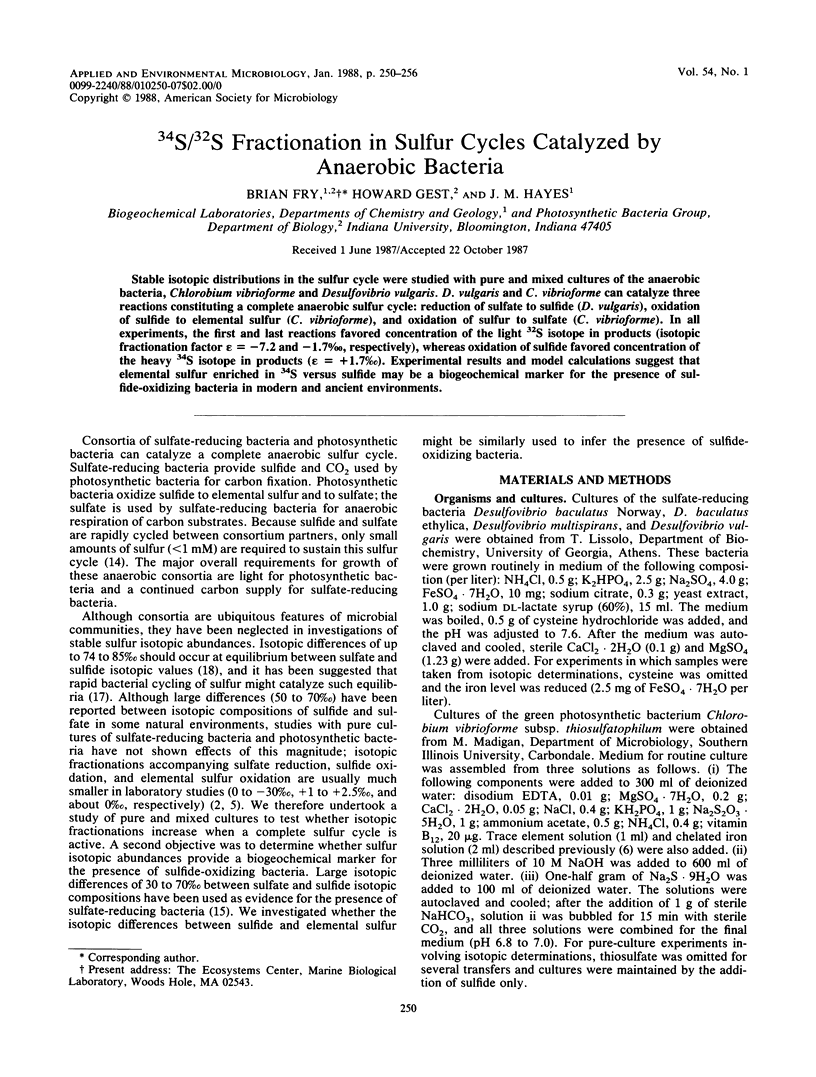
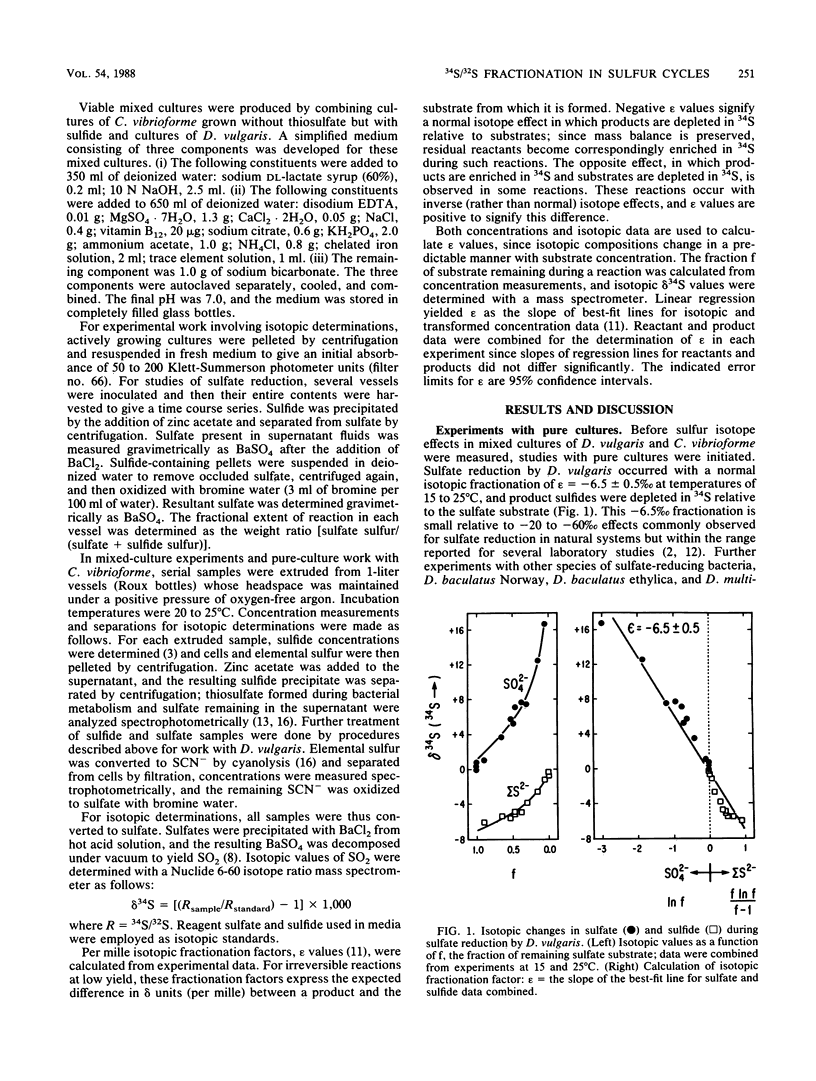
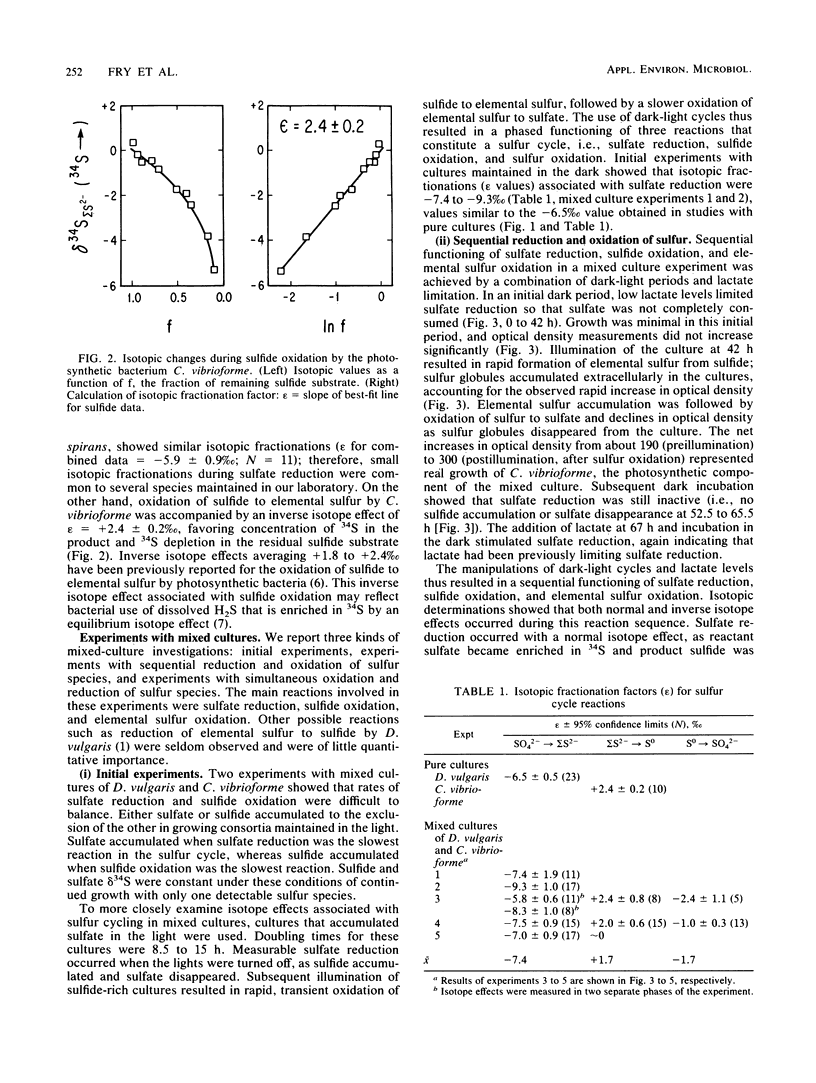

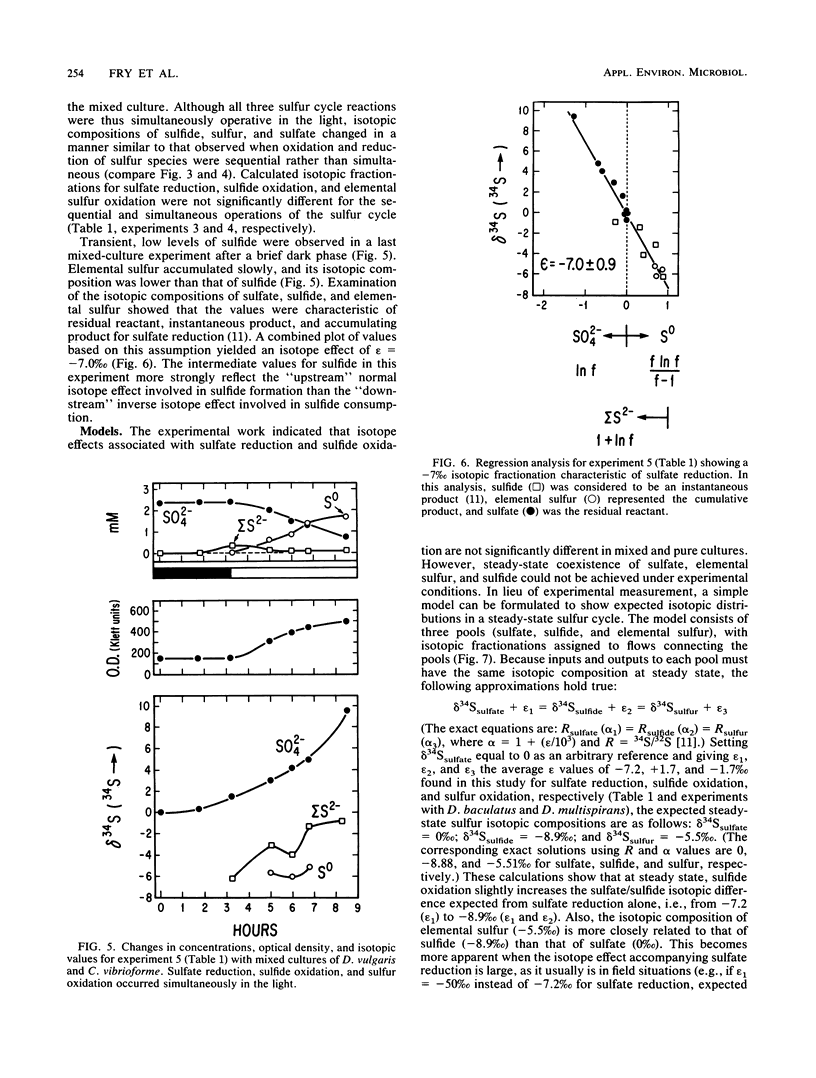
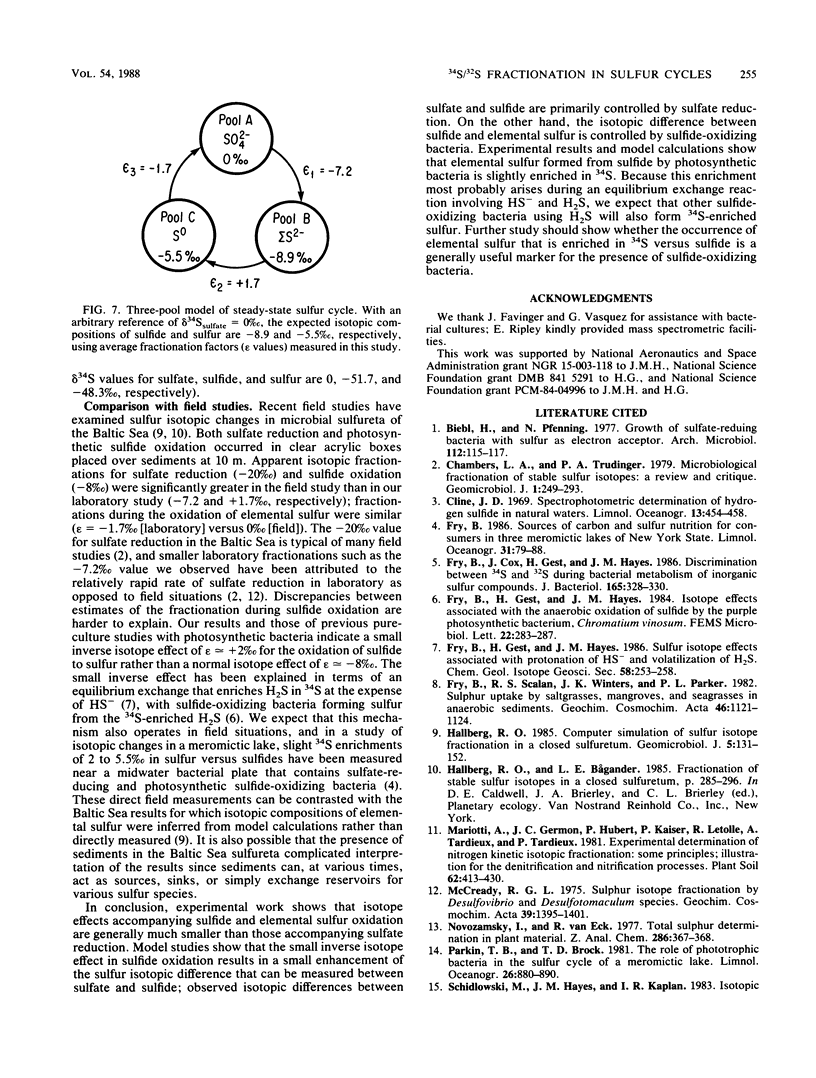

Selected References
These references are in PubMed. This may not be the complete list of references from this article.
- Biebl H., Pfennig Growth of sulfate-reducing bacteria with sulfur as electron acceptor. Arch Microbiol. 1977 Feb 4;112(1):115–117. doi: 10.1007/BF00446664. [DOI] [PubMed] [Google Scholar]
- Fry B., Cox J., Gest H., Hayes J. M. Discrimination between 34S and 32S during bacterial metabolism of inorganic sulfur compounds. J Bacteriol. 1986 Jan;165(1):328–330. doi: 10.1128/jb.165.1.328-330.1986. [DOI] [PMC free article] [PubMed] [Google Scholar]
- Fry B., Gest H., Hayes J. M. Sulfur isotope effects associated with protonation of HS- and volatilization of H2S. Isot Geosci. 1986;58:253–258. [PubMed] [Google Scholar]
- Fry B. Sources of carbon and sulfur nutrition for consumers in three meromictic lakes of New York State. Limnol Oceanogr. 1986;31(1):79–88. doi: 10.4319/lo.1986.31.1.0079. [DOI] [PubMed] [Google Scholar]


